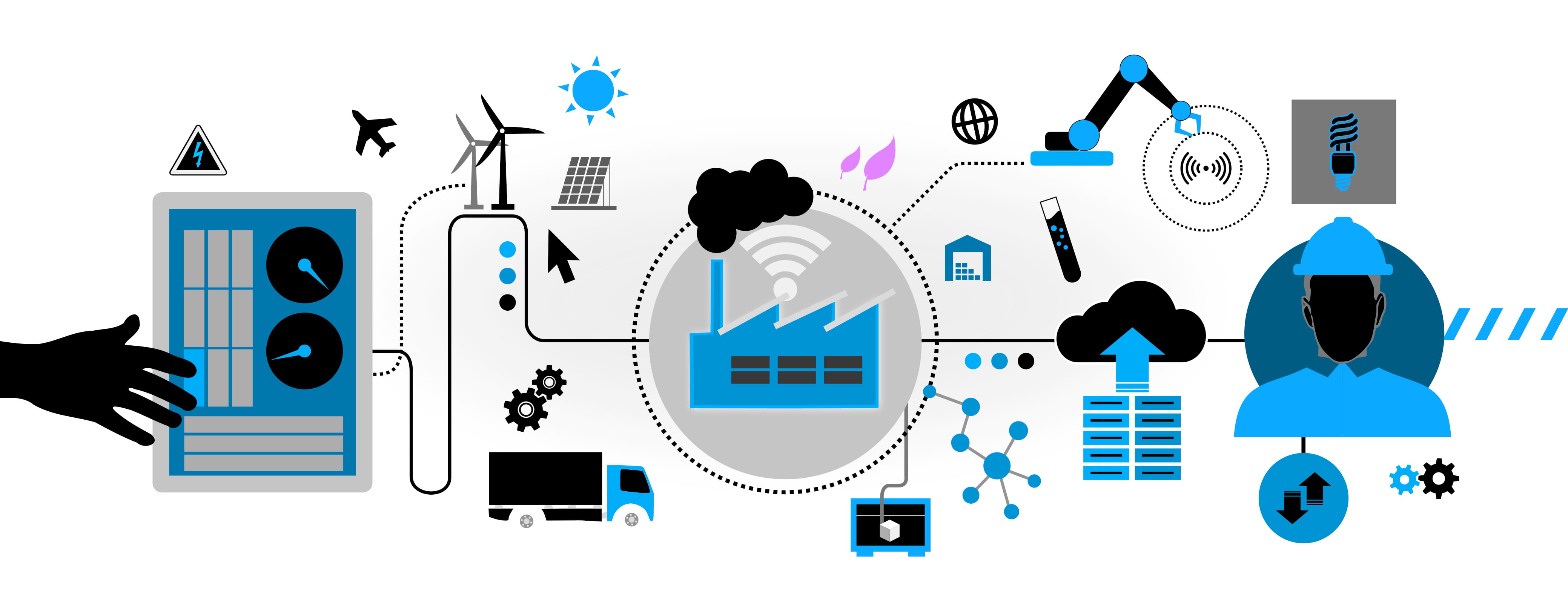China’s Bioeconomy Development and Implications for Benelux Businesses

Fuelled by government initiatives and substantial investments in science, technology and education, China's biomedical and Medtech sectors are thriving. Agricultural and food production are revolutionised through advanced plant and animal breeding programs, alongside the integration of the Internet of Things. More specifically, synthetic biology presents new opportunities for specialty chemical manufacturing within China's growing “bioeconomy.” The bioeconomy refers to an economic system that utilises renewable biological resources, such as plants, animals and microorganisms, to produce goods, services, and energy. It encompasses various sectors including agriculture, forestry, fisheries, biotechnology and bioenergy, aiming to create sustainable solutions while reducing dependence on fossil fuels and minimising environmental impact. In essence, it promotes the efficient and sustainable use of biological resources to meet societal needs and drive economic growth. In recent years, the bioeconomy has experienced a significant boom, aligning with the Sustainable Development Goals (SDGs) set forth by the United Nations. Through initiatives such as the UN's 2030 Agenda for Sustainable Development and its various programmes, the global community has increasingly recognised the potential of the bioeconomy to address pressing challenges such as poverty alleviation, climate change mitigation, and sustainable development. This recognition has fuelled investment and innovation in bio-based industries, leading to a surge in economic growth and the emergence of new opportunities for sustainable development worldwide.
During the past couple of years, the Chinese government has implemented policies to boost the development of the bioeconomy. This trend is exemplified in Wuxi, Jiangsu. After 25 years of extensive investments and development, Wuxi High-Tech Industrial Development Zone now plays an important role in the city’s economic growth. To illustrate, 2007 saw a total production output value of $60 million in the area, with per-capita GDP exceeding $15,000 and a total revenue of $11.4 billion, according to China Daily. Since then, reported on April 27 last year, Wuxi saw its GDP rise by 4.9% in the first quarter to nearly 339.18 billion yuan (€43.85 billion). Various economic indicators such as fixed asset investment, industrial added value, and retail sales showed positive growth trends. Foreign capital utilisation surged by 30.7% to almost $1.69 billion, with a significant portion directed towards the high-tech sector, increasing by 62.4% year-on-year. By the end of March 2023, Wuxi was home to over 1.1 million market entities and hosted 85 of China's top 500 enterprises, leading in Jiangsu province, according to the latest published data. During the same period, the per capita disposable income of residents reached 21.613 yuan, marking a 3.9% increase from the previous year. This exceptional growth is partly a result of the detailed and coherent policy to attract and facilitate foreign businesses in these industries. The '14th Five-Year Plan for Bioeconomy Development' in China (2021-2025) prioritises biomedicine, agriculture, bio-manufacturing and bio-security, with significant implications evident in Wuxi. The plan outlines three strategies for advancing the bioeconomy: technological innovation, industrialisation, and policy support. Ultimately, it underscores the success of China's inaugural bioeconomy development plan, highlighting the pivotal role of industrial biotechnology. Wuxi's achievements in promoting innovation and drawing international investment highlight the efficacy of China's strategic focus on advancing the bioeconomy. With China's sustained emphasis on biotechnology, companies in the Benelux and Europe should explore collaborations and investment prospects in areas like Wuxi to leverage the expanding market. By aligning their strategies with China's objectives for scientific and technological progress, European enterprises can not only contribute to the global expansion of the bioeconomy, but also capitalise on the flourishing biotech landscape in China. This success carries important implications for businesses in the Benelux region.
The current biotech environment in China, as outlined in the 14th five-year plan (2021-2025), emphasises several key points. Firstly, there is an increased government expenditure on R&D. There has been a rise in government expenditure on research and development beyond the present 2.4% of GDP. Industrial R&D is strongly supported by tax exemptions, and more funding is allocated to fundamental R&D in academia. Furthermore, five-year the plan includes further expansion of R&D infrastructure, with the establishment of more national research centres focusing on biotechnology and related fields. Moreover, the plan aims to further improve medical care by leveraging big data, internet-based services and financial incentives for innovative drugs and equipment. There is also a focus on stringent cost control of generic drugs and instrumentation. In addition to that, China is strategically focusing on advancing various aspects of biotechnology. Genomic medicine, IT-based diagnostic services, and cell technology are identified as crucial areas for future development within Traditional Chinese Medicine (TCM). Additionally, there is a concerted effort to strengthen research in agricultural biotechnology, encompassing crops, trees, husbandry, fish and algae. These initiatives underscore China's dedication to fostering innovation and sustainability in biotechnology, biomedical technology, and related fields, aligning with its long-term strategic goals for scientific and technological advancement. This Bioeconomy development enhancement is not necessarily a new phenomenon in China. The Chinese government has a long history with implementing plans to issue policies aimed at deepening technological innovation, enhancing industry supervision, and expanding market applications to stimulate capital investments, technological advancements, talent development, international collaborations, and the establishment of a supportive policy environment conducive to innovative bioeconomy development. Efforts focusing on improving market accessibility and boosting demand in key sectors such as pharmaceuticals, medical devices, and food additives have existed for decades. To illustrate, various initiatives, including the '1035 Plan', 'Medical Science and Technology Policy (2002010)', 'Bio-Industry Development Eleventh Five-Year Plan', and 'Made in China 2025', have been implemented to support and expand the biopharmaceutical landscape, leading to significant advancements in innovative drugs and the growth of bio-industrial groups. Furthermore, measures have been taken to strengthen intellectual property protection, enhance the management of access to biological genetic resources, and promote the utilisation of intellectual property in practical applications. The issuance of the National Intellectual Property Strategy Outline (2021-2035) by the State Council in June 2008 has facilitated improvements in China's legal framework for intellectual property protection and enforcement. Moreover, there has been increased financial support for bio-innovations, with the utilisation of various financial funds at all levels to strengthen the bioeconomy. For instance, Jiangsu Province introduced policies in September 2021 to foster the high-quality development of the biomedical industry, providing financial assistance for research on innovative drugs and medical devices. Likewise, recognising local characteristics, the Kunming government initiated financial subsidies in December 2020 to support traditional Chinese medicine planting, processing, and related activities. Lastly, China is committed to global public health governance and will collaborate with the international community to address emerging biosecurity challenges. Initiatives such as sending the first medical team to Algeria in 1963 and proposing the 'Healthy Silk Road' in 2015 demonstrate China's engagement in international health assistance. Moving forward, the Chinese government will continue to provide financial support, nurture biotechnology talent, and formulate new policies to create a favourable policy environment for the innovative development of the bioeconomy.
In Special Economic Zones such as in Wuxi, the policies outlined in China's 14th five-year plan have been exemplified through various initiatives aimed at fostering innovation and attracting international businesses. For instance, increased government expenditure on R&D has led to the establishment of state-of-the-art research facilities and infrastructure in Wuxi's biotech sector. Tax exemptions and financial incentives for industrial R&D have encouraged multinational corporations to set up research centres and innovation hubs in the region. Additionally, the emphasis on genomic medicine, IT-based diagnostic services, and agricultural biotechnology aligns with Wuxi's efforts to position itself as a leading hub for biotech innovation. By leveraging these strategic priorities and offering a conducive business environment, Wuxi has successfully attracted international businesses seeking to tap into China's burgeoning biotech market and contribute to its scientific and technological advancement.
The policies outlined in China's 14th five-year plan have had a positive impact on the bioeconomy, particularly evident in the extensive growth of Wuxi in recent years. The increased government expenditure on R&D, coupled with tax exemptions and financial incentives, has stimulated innovation and attracted international businesses to the region. Wuxi's success in fostering innovation and attracting foreign investment underscores the effectiveness of China's strategic priorities in advancing the bioeconomy. As China continues to prioritise biotechnology and related fields, businesses in the Benelux and Europe should consider tapping into this growing market by exploring partnerships and investment opportunities in regions such as Wuxi. By aligning with China's goals for scientific and technological advancement, European businesses can contribute to the global growth of the bioeconomy while benefiting from China's thriving biotech sector.

